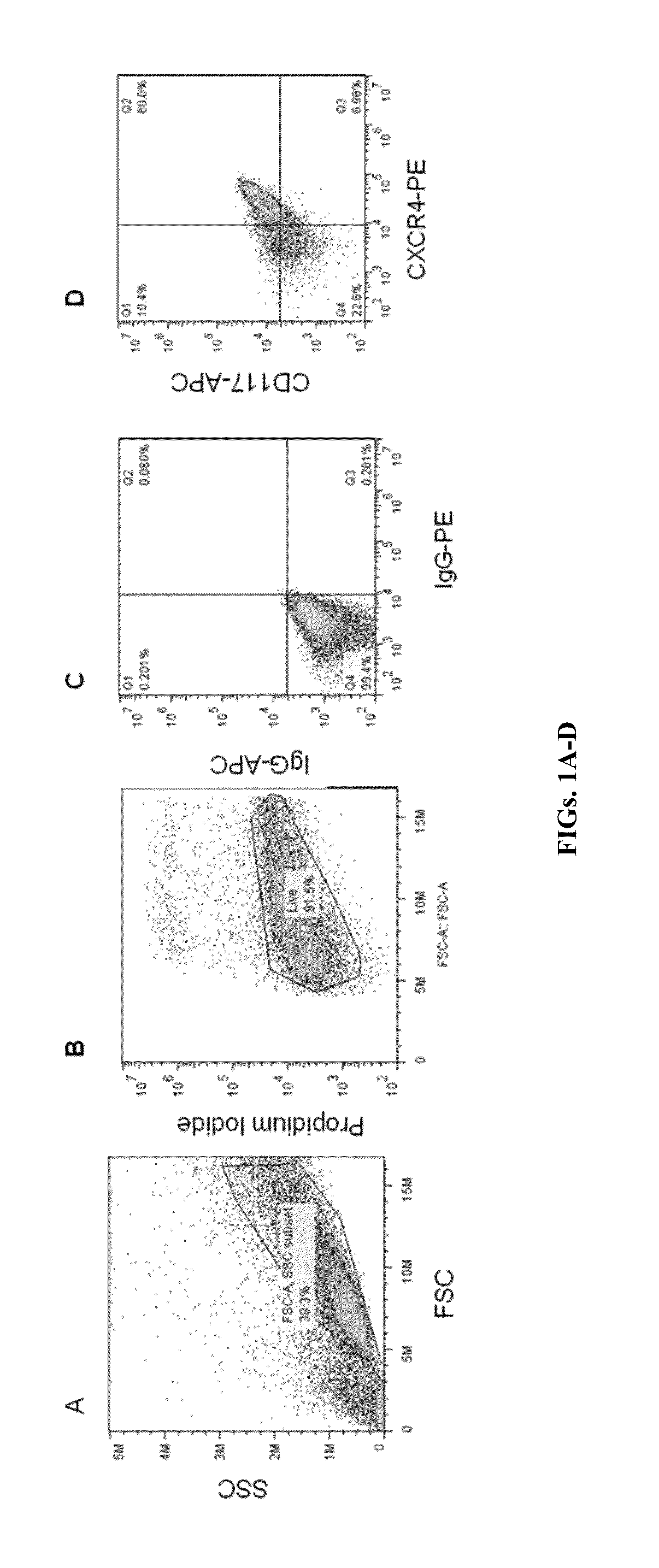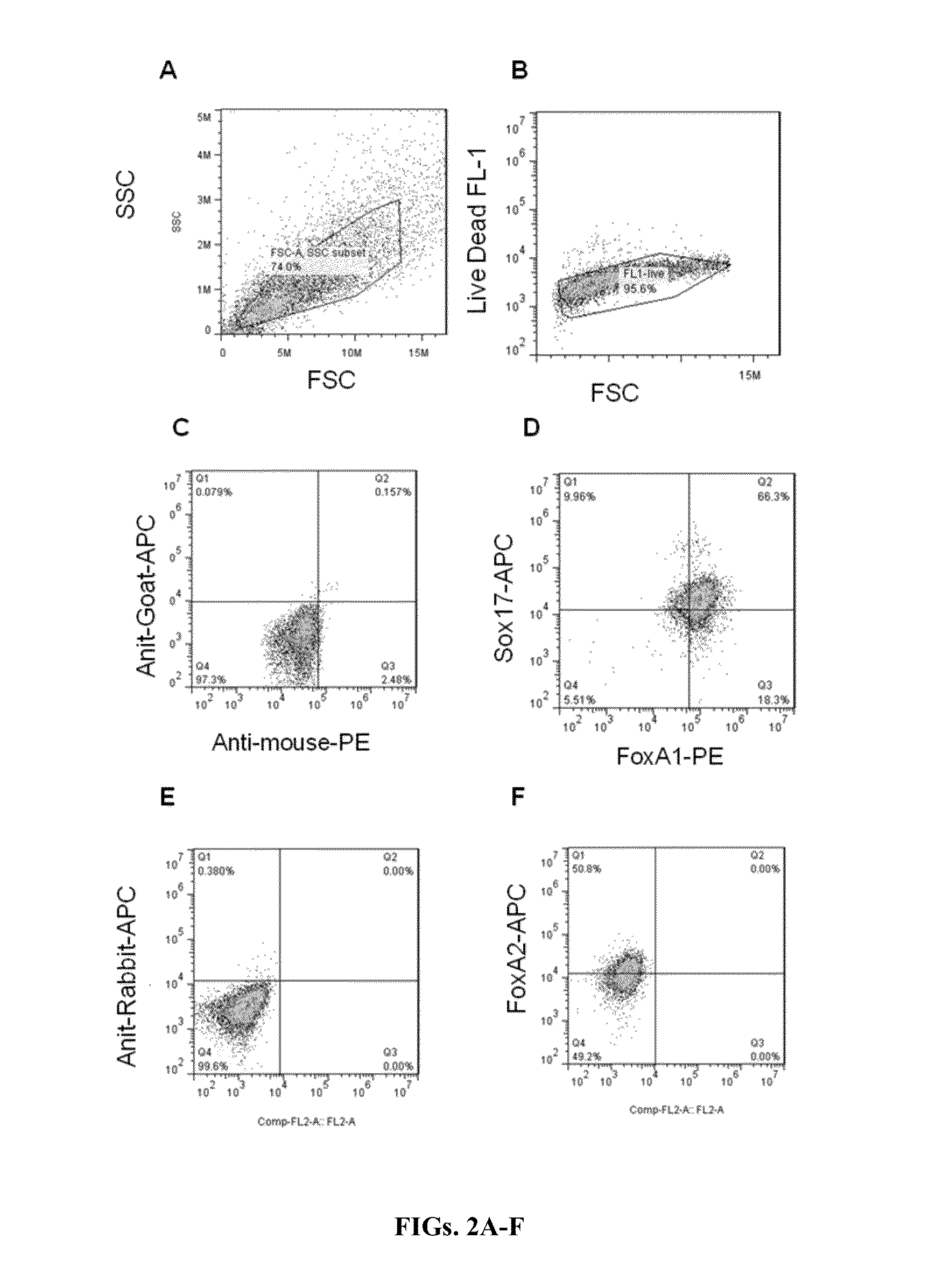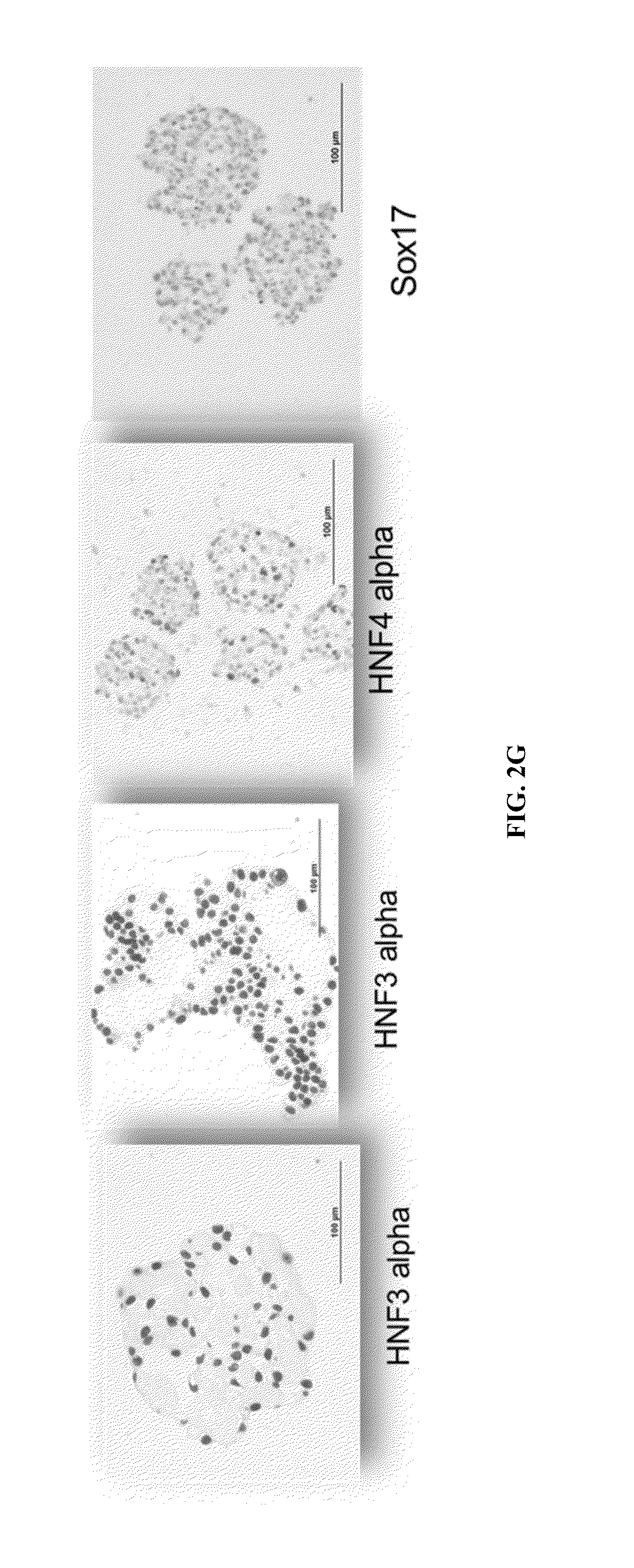Methods and compositions for culturing endoderm progenitor cells in suspension
a technology of endoderm progenitor cells and suspensions, which is applied in the field of stem cells, endocrinology, and differentiated cells, can solve the problems of limited pancreatic cells, insufficient production to produce the required number, and immature phenotype of endoderm cells generated from pscs, and achieve the effect of promoting the growth of self-renewing endoderm progenitor cells and promoting the growth of self-renewing
- Summary
- Abstract
- Description
- Claims
- Application Information
AI Technical Summary
Benefits of technology
Problems solved by technology
Method used
Image
Examples
example 1
Generation of Definitive Endoderm (DE) Cells
[0201]Human iPSCs were maintained under feeder-free conditions in the presence of TeSR or Essential 8 media. For monolayer endoderm progenitor differentiation of iPSCs, PSCs were plated onto Matrigel-coated dishes at 80% confluency. Undifferentiated iPSCs were cultured in the presence of Activin A (100 ng / ml) or Nodal (100 ng / ml) in RPMI medium supplemented with 10% SFD, 1× glutamine, MTG (4.5×10−4 M) under serum-free conditions for day zero, followed by two days in the RPMI / 10% SFD medium further supplemented with ascorbic acid (50 μg / mL), BMP4 (0.5 ng / ml), bFGF (10 ng / ml), and VEGF (10 ng / ml) under serum-free conditions. This was followed by four days in SFD medium supplemented with MTG (4.5×10−4 M), ascorbic acid (50 μg / ml), BMP4 (0.5 ng / ml), bFGF (10 ng / ml), Activin A (100 ng / ml) and VEGF (10 ng / ml) with a media change after two days. SFD medium was made as per Cheng et al. (2012b). For sampling, a portion of the cells were harvested, ...
example 2
Effects of Seeding Density on the Generation of DE
[0202]Undifferentiated iPSCs maintained using Essential 8 on Matrigel were plated at different seeding densities / cm2 (e.g., 5000, 15,000, and 20,000) on Matrigel. Four days-post-plating, the cells seeded at 15,000 and 20,000 cells / cm2 were placed in 90% RPMI / 10% SFD media containing 100 ng / mL Activin A (T0) for 24 h. On the next day, the cultures were placed in media containing 100 ng / mL Activin A, 2.5 ng / mL BMP4, 10 ng / mL VEGF, and 10 ng / mL zebrafish FGF2 for 48 h (T1 / T2). Finally, the cultures were placed in SFD media supplemented with 100 ng / mL Activin A, 2.5 ng / mL BMP4, 10 ng / mL VEGF, and 10 ng / mL zebrafish FGF2 for the next 4-5 days (T3-T6). At this step, the cells can optionally be incubated for up to 12 days. The cells were harvested from day 3 to day 6 using TrypLE. The total viable cell number post digestion was determined at each time point (FIG. 16A). The percentage of CXCR4, CD 117 co-expressing cells was determined by su...
example 3
Supplementation with CHIR is not Essential for the Generation of DE
[0203]Undifferentiated iPSCs maintained using Essential 8 on Matrigel were plated at a seeding density of 13,000 cells / cm2 on Matrigel. Four days-post-plating, the cells were placed in 90% RPMI / 10% SFD media containing 100 ng / mL Activin A for one day followed by incubation with 90% RPMI / 10% SFD supplemented with 100 ng / mL Activin A, 2.5 ng / mL BMP4, 10 ng / mL VEGF, and 10 ng / mL zebrafish FGF2 for the next two days. From day 4-12, the cells were placed in SFD media supplemented with 100 ng / mL Activin A, 2.5 ng / mL BMP4, 10 ng / mL VEGF, and 10 ng / mL zebrafish FGF2. Supplementation with 2 μM CHIR was included in one set at day 1 of differentiation while it was omitted in another set. The cells were harvested on day 7 using TrypLE. The total viable cell number post digestion was determined at each time point. The percentage of CXCR4, CD117 co-expressing cells was determined by cell surface staining by flow cytometry (Table 1...
PUM
| Property | Measurement | Unit |
|---|---|---|
| seeding density | aaaaa | aaaaa |
| volume | aaaaa | aaaaa |
| volume | aaaaa | aaaaa |
Abstract
Description
Claims
Application Information
 Login to View More
Login to View More - R&D
- Intellectual Property
- Life Sciences
- Materials
- Tech Scout
- Unparalleled Data Quality
- Higher Quality Content
- 60% Fewer Hallucinations
Browse by: Latest US Patents, China's latest patents, Technical Efficacy Thesaurus, Application Domain, Technology Topic, Popular Technical Reports.
© 2025 PatSnap. All rights reserved.Legal|Privacy policy|Modern Slavery Act Transparency Statement|Sitemap|About US| Contact US: help@patsnap.com



